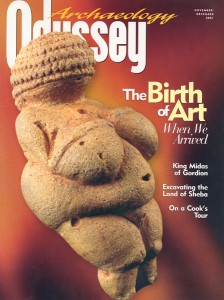The Death of Midas: An Eternal Feast
Sidebar to: King Midas: From Myth to Reality
Before the burial chamber of King Midas was covered with a huge mound of clay and stone around 700 B.C.E., his mourners held an elaborate funerary feast. Soon afterward, the bronze vessels containing the remains of the repast were stacked in large cauldrons and carried into the tomb, where they rested alongside the king’s coffin for 2,700 years.
When Midas’s tomb was uncovered in 1957, the leftovers stored in hundreds of bronze drinking cups, vats and pottery jars were chemically analyzed at the University of Pennsylvania Museum, but the results were inconclusive. Recently, however, archeochemist Patrick McGovern and his colleagues at the museum reexamined the food remnants using new scientific techniques, such as infrared spectroscopy, and were able to reconstruct the banquet’s menu.
Their findings, reported in the December 23, 1999, issue of Nature, were surprisingly detailed, thanks to the well-preserved organic residues adhering to the vessels. Around 100 mourners (as we surmise from the number of quart-sized drinking bowls found in the tomb) shared a meal that was truly fit for a king. The Phrygian cooks apparently marinated mutton or goat in olive oil, honey and wine, barbecued the meat and then stewed it along with lentils seasoned with anise or fennel.
Already a library member? Log in here.
Institution user? Log in with your IP address.

